Do you have a question about the Bosch WAE20067EE and is the answer not in the manual?
Applies to household use, machine-washable fabrics, and hand-washable wool in detergent solution.
Requires cold drinking water and standard detergents/care products suitable for washing machines.
Do not leave children unattended near the washing machine; it is not for use by unfamiliar persons or children.
Ensure correct installation as per separate installation instructions provided with the appliance.
Never use a damaged machine; inform after-sales service if issues are found.
Connect the mains plug with dry hands. Take hold of the plug only.
Ensure the water tap is turned on before starting the washing machine.
Details compartment usage for main wash detergent, fabric softener, bleach, and pre-wash.
Run the machine once without laundry as per page 9 instructions.
Follow care label information for sorting, loading, and washing textiles correctly.
Sort laundry by type, colour, soiling level, and appropriate temperature for washing.
Do not exceed the maximum load capacity of the washing machine as specified on page 7.
Insert a mix of large and small laundry items into the drum for balanced washing.
Close the washing machine door securely, ensuring no laundry is trapped between the door and the seal.
Measure detergent based on laundry amount, soiling, water hardness, and manufacturer's instructions.
Add liquid detergent to the appropriate dispenser; powder can be placed directly in the drum.
Dilute thick fabric softener with water to prevent dispenser blockages and ensure proper dispensing.
The programme selector controls machine operation, including on/off and programme selection, turning in either direction.
Press the 'Inicio (Start)' button to begin the selected washing programme.
Open the door and remove the washing. Check for foreign objects and leave the door/drawer open to air.
Turn the programme selector to 'Stop (Off)' after removing the laundry.
Turn the programme selector to 'Stop (Off)' to switch off the washing machine.
The programme ends when the 'centrifugar (spin) - terminado (end)' status indicator flashes.
Interrupt programmes at high temperatures by selecting 'Rinse', or at lower temperatures by selecting 'Spin' or 'Empty'.
If a wrong programme is selected, reselect it and press 'Inicio (Start)' to restart from the beginning.
Refer to page 7 for additional functions and a comprehensive overview of programmes.
The 'Inicio (Start)' button is used for starting or interrupting the washing programme.
Option to keep clothing immersed in the last rinse water before final spin.
Allows reduction of the spin speed; values vary depending on the specific washing machine model.
General advice on protecting the washing machine and laundry, including dosage and pre-treatment.
Always follow manufacturer instructions for dosing all washing powders, additives, and cleaning agents.
Ensure all pockets are emptied of contents, especially metal items like paperclips, to prevent damage.
Wash delicates such as tights, curtains, and underwired bras in a laundry bag for protection.
Fasten zips and buttons on garments before washing to prevent damage to laundry and machine.
Brush sand out of pockets and collars to prevent abrasive damage during the wash cycle.
Remove curtain fittings or place curtains in a laundry bag to prevent damage.
Guidance on washing items with light or heavy soiling, including programme selection.
Wash new clothing items separately to prevent colour transfer or damage to other garments.
Generally, do not pre-wash; pretreat stains directly and select appropriate programmes.
Instructions for soaking laundry, including programme selection and pausing the cycle.
Starching is possible in all programmes using liquid starch added to the fabric softener compartment.
Use dye in normal quantities; avoid bleach and follow dye manufacturer's instructions.
Details programmes for hard-wearing cotton and linen fabrics at various temperatures and spin speeds.
Programme for hard-wearing fabrics with an optional prewash at 30°C, featuring longer wash breaks.
For easy-care synthetic or blended fabrics, offering gentle washing at 40°C or cold.
Gentle washing programme for delicate fabrics like silk, satin, or synthetics at cold temperatures.
Specially designed for hand or machine-washable wool fabrics, using cold water and gentle action.
Read and follow all enclosed manuals and instructions for safe operation and usage.
Never pull the cable to disconnect the mains plug or insert/disconnect with damp hands.
Includes warnings about worn-out appliances, securing doors, and keeping children/pets away from packaging.
Keep packaging, film, and packaging parts out of reach of children to prevent suffocation.
Keep detergents and care products out of reach of children to prevent accidental ingestion.
Avoid laundry pretreated with solvent-based cleaning agents; rinse thoroughly by hand beforehand.
Warnings about hot surfaces, draining hot liquids, climbing, leaning on doors, and reaching into the drum.
Explains how values for energy, water, and duration are determined based on programme and model.
Details the standard for testing and energy labelling as per EU directive 2010/30/EU using cold water.
Includes steps for initial use, connecting plug, and running a cycle without laundry.
Clean the housing and control panel with a soft, damp cloth; avoid abrasive cleaners.
Step-by-step guide to remove, clean, and reinsert the detergent drawer and its insert.
Leave the washing machine door open to dry the drum. Use chlorine-free cleaners for rust stains.
Descale according to the descaler manufacturer's instructions; correct detergent dosage usually prevents need.
Explains what flashing indicator lights signify, indicating specific operational status or faults.
Indicates the washing machine door may be caught by laundry. Close door properly.
Suggests issues with the supply hose (kinked/trapped) or low water pressure; check filter.
Points to a blocked detergent solution pump or a blocked drainage hose/waste pipe.
Indicates a motor fault. Call the after-sales service for diagnosis and repair.
Signifies a general fault. Turn off the tap and call the after-sales service.
Check drainage hose attachment and supply hose connection tightness.
Verify tap is on, supply hose is not kinked, and the filter is clean.
Check if the filter is blocked or if the supply hose is kinked or trapped.
Wait approximately 2 minutes for the safety function to deactivate, or check programme selection.
Ensure 'Inicio (Start)' is selected, the door is closed, and the correct programme is chosen.
Clean the detergent solution pump or the waste pipe and drainage hose.
This is normal; water may be below the visible area of the drum.
Unbalanced load detection may cancel spin. Distribute laundry evenly or select a lower speed.
This indicates the unbalanced load detection system is adjusting for imbalance.
This is normal and the care product's action is not affected; clean insert if necessary.
Run a 90°C cotton programme without laundry using standard detergent to clean the machine.
Reduce detergent dosage or mix fabric softener with water and add to compartment II.
Check appliance feet are fixed and transportation safety devices are removed.
Clean the detergent-solution pump or check for power issues or tripped fuses.
Check for power cut, tripped fuses, or call after-sales service if fault persists.
This is normal; the unbalanced load detection system adjusts imbalance by redistributing laundry.
Foam detection may add an extra rinse cycle. Select 'Rinse' or brush laundry after washing.
Instructions for cleaning the detergent solution pump, including draining and filter cleaning.
Run an 'Empty' programme after maintenance to prevent detergent from flowing out during the next wash.
Guide to cleaning the drainage hose and siphon connection to ensure proper water drainage.
Instructions for cleaning the filter in the water supply to ensure adequate water pressure.
Applies to household use, machine-washable fabrics, and hand-washable wool in detergent solution.
Requires cold drinking water and standard detergents/care products suitable for washing machines.
Do not leave children unattended near the washing machine; it is not for use by unfamiliar persons or children.
Ensure correct installation as per separate installation instructions provided with the appliance.
Never use a damaged machine; inform after-sales service if issues are found.
Connect the mains plug with dry hands. Take hold of the plug only.
Ensure the water tap is turned on before starting the washing machine.
Details compartment usage for main wash detergent, fabric softener, bleach, and pre-wash.
Run the machine once without laundry as per page 9 instructions.
Follow care label information for sorting, loading, and washing textiles correctly.
Sort laundry by type, colour, soiling level, and appropriate temperature for washing.
Do not exceed the maximum load capacity of the washing machine as specified on page 7.
Insert a mix of large and small laundry items into the drum for balanced washing.
Close the washing machine door securely, ensuring no laundry is trapped between the door and the seal.
Measure detergent based on laundry amount, soiling, water hardness, and manufacturer's instructions.
Add liquid detergent to the appropriate dispenser; powder can be placed directly in the drum.
Dilute thick fabric softener with water to prevent dispenser blockages and ensure proper dispensing.
The programme selector controls machine operation, including on/off and programme selection, turning in either direction.
Press the 'Inicio (Start)' button to begin the selected washing programme.
Open the door and remove the washing. Check for foreign objects and leave the door/drawer open to air.
Turn the programme selector to 'Stop (Off)' after removing the laundry.
Turn the programme selector to 'Stop (Off)' to switch off the washing machine.
The programme ends when the 'centrifugar (spin) - terminado (end)' status indicator flashes.
Interrupt programmes at high temperatures by selecting 'Rinse', or at lower temperatures by selecting 'Spin' or 'Empty'.
If a wrong programme is selected, reselect it and press 'Inicio (Start)' to restart from the beginning.
Refer to page 7 for additional functions and a comprehensive overview of programmes.
The 'Inicio (Start)' button is used for starting or interrupting the washing programme.
Option to keep clothing immersed in the last rinse water before final spin.
Allows reduction of the spin speed; values vary depending on the specific washing machine model.
General advice on protecting the washing machine and laundry, including dosage and pre-treatment.
Always follow manufacturer instructions for dosing all washing powders, additives, and cleaning agents.
Ensure all pockets are emptied of contents, especially metal items like paperclips, to prevent damage.
Wash delicates such as tights, curtains, and underwired bras in a laundry bag for protection.
Fasten zips and buttons on garments before washing to prevent damage to laundry and machine.
Brush sand out of pockets and collars to prevent abrasive damage during the wash cycle.
Remove curtain fittings or place curtains in a laundry bag to prevent damage.
Guidance on washing items with light or heavy soiling, including programme selection.
Wash new clothing items separately to prevent colour transfer or damage to other garments.
Generally, do not pre-wash; pretreat stains directly and select appropriate programmes.
Instructions for soaking laundry, including programme selection and pausing the cycle.
Starching is possible in all programmes using liquid starch added to the fabric softener compartment.
Use dye in normal quantities; avoid bleach and follow dye manufacturer's instructions.
Details programmes for hard-wearing cotton and linen fabrics at various temperatures and spin speeds.
Programme for hard-wearing fabrics with an optional prewash at 30°C, featuring longer wash breaks.
For easy-care synthetic or blended fabrics, offering gentle washing at 40°C or cold.
Gentle washing programme for delicate fabrics like silk, satin, or synthetics at cold temperatures.
Specially designed for hand or machine-washable wool fabrics, using cold water and gentle action.
Read and follow all enclosed manuals and instructions for safe operation and usage.
Never pull the cable to disconnect the mains plug or insert/disconnect with damp hands.
Includes warnings about worn-out appliances, securing doors, and keeping children/pets away from packaging.
Keep packaging, film, and packaging parts out of reach of children to prevent suffocation.
Keep detergents and care products out of reach of children to prevent accidental ingestion.
Avoid laundry pretreated with solvent-based cleaning agents; rinse thoroughly by hand beforehand.
Warnings about hot surfaces, draining hot liquids, climbing, leaning on doors, and reaching into the drum.
Explains how values for energy, water, and duration are determined based on programme and model.
Details the standard for testing and energy labelling as per EU directive 2010/30/EU using cold water.
Includes steps for initial use, connecting plug, and running a cycle without laundry.
Clean the housing and control panel with a soft, damp cloth; avoid abrasive cleaners.
Step-by-step guide to remove, clean, and reinsert the detergent drawer and its insert.
Leave the washing machine door open to dry the drum. Use chlorine-free cleaners for rust stains.
Descale according to the descaler manufacturer's instructions; correct detergent dosage usually prevents need.
Explains what flashing indicator lights signify, indicating specific operational status or faults.
Indicates the washing machine door may be caught by laundry. Close door properly.
Suggests issues with the supply hose (kinked/trapped) or low water pressure; check filter.
Points to a blocked detergent solution pump or a blocked drainage hose/waste pipe.
Indicates a motor fault. Call the after-sales service for diagnosis and repair.
Signifies a general fault. Turn off the tap and call the after-sales service.
Check drainage hose attachment and supply hose connection tightness.
Verify tap is on, supply hose is not kinked, and the filter is clean.
Check if the filter is blocked or if the supply hose is kinked or trapped.
Wait approximately 2 minutes for the safety function to deactivate, or check programme selection.
Ensure 'Inicio (Start)' is selected, the door is closed, and the correct programme is chosen.
Clean the detergent solution pump or the waste pipe and drainage hose.
This is normal; water may be below the visible area of the drum.
Unbalanced load detection may cancel spin. Distribute laundry evenly or select a lower speed.
This indicates the unbalanced load detection system is adjusting for imbalance.
This is normal and the care product's action is not affected; clean insert if necessary.
Run a 90°C cotton programme without laundry using standard detergent to clean the machine.
Reduce detergent dosage or mix fabric softener with water and add to compartment II.
Check appliance feet are fixed and transportation safety devices are removed.
Clean the detergent-solution pump or check for power issues or tripped fuses.
Check for power cut, tripped fuses, or call after-sales service if fault persists.
This is normal; the unbalanced load detection system adjusts imbalance by redistributing laundry.
Foam detection may add an extra rinse cycle. Select 'Rinse' or brush laundry after washing.
Instructions for cleaning the detergent solution pump, including draining and filter cleaning.
Run an 'Empty' programme after maintenance to prevent detergent from flowing out during the next wash.
Guide to cleaning the drainage hose and siphon connection to ensure proper water drainage.
Instructions for cleaning the filter in the water supply to ensure adequate water pressure.
| Door hinge | Left |
|---|---|
| Drum volume | 55 L |
| Control type | Buttons, Rotary |
| Loading type | Front-load |
| Tub material | Plastic |
| Certification | CE, VDE |
| Drum material | Stainless steel |
| Product color | White |
| Built-in display | Yes |
| Appliance placement | Freestanding |
| Drum capacity | 7 kg |
| Spin-drying class | D |
| Maximum spin speed | 1000 RPM |
| Minimum spin speed | 600 RPM |
| Noise level (spin) | 75 dB |
| Noise level (wash) | 58 dB |
| Delayed start timer | No |
| Number of washing programs | - |
| Washing class | A |
| Dimensions (WxDxH) | 848 x 600 x 590 mm |
| Annual water consumption washing | 10780 L |
| Annual energy consumption washing | 172 kWh |
| Connected load | 2300 W |
| AC input voltage | 220 - 240 V |
| AC input frequency | 50 Hz |
| Water consumption per cycle | - L |
| Energy consumption washing per cycle | - kWh |
| Package weight | Weight of the packaged product in gram. |
| Depth | 590 mm |
|---|---|
| Width | 600 mm |
| Height | 848 mm |
| Weight | 69000 g |
| Gross weight | 70000 g |

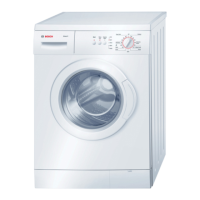



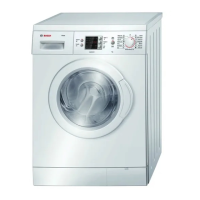
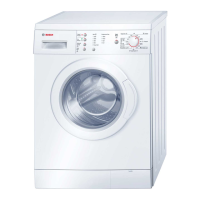
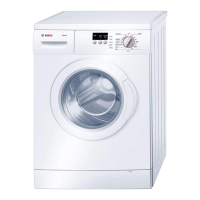
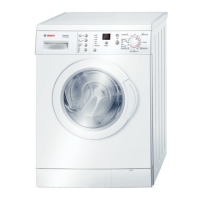
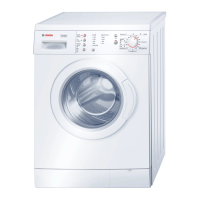
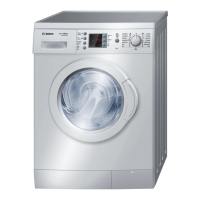
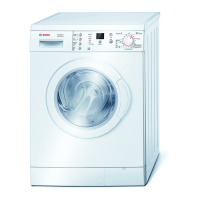
